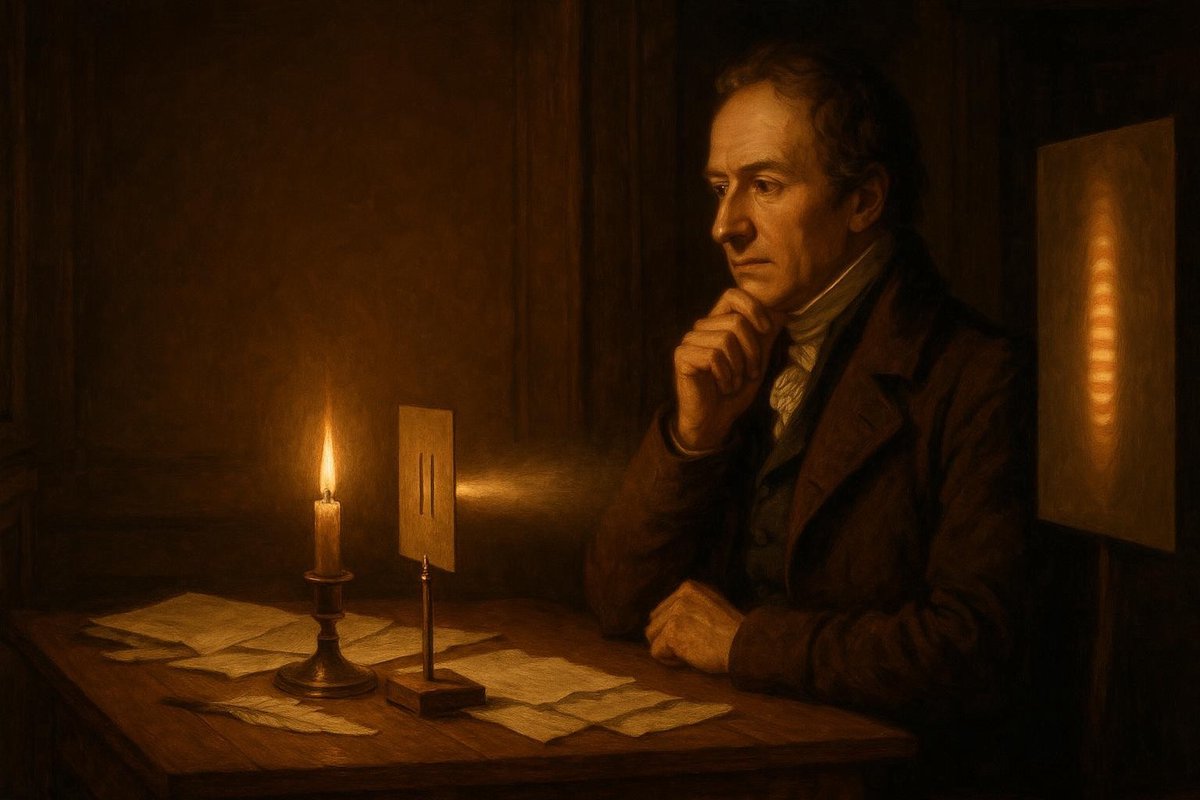
Introduction
Have you ever wondered how light behaves? Is it a wave or a particle? This question has intrigued scientists for centuries. In the early 19th century, Thomas Young dared to unravel this mystery through what we now call the Double-Slit Experiment. His journey not only defied classical physics but also laid the groundwork for quantum mechanics. Young’s quest was not merely a scientific endeavor; it was a courageous leap into the unknown, challenging the very essence of how we perceive the natural world.
Hypothesis & Context
At the turn of the 19th century, the understanding of light was fragmented. Many believed light to be a stream of particles, a theory championed by Isaac Newton. Yet, Thomas Young, an English polymath, had a different hunch. He hypothesized that light might also behave like a wave.
- Young proposed that if light were a wave, it should exhibit interference patterns.
- This idea contradicted the particle theory, which suggested light traveled in straight lines without such patterns.
- Young’s background in medicine and linguistics gave him a unique perspective, allowing him to challenge established norms.
Why was this important? Because a wave theory could explain phenomena like diffraction and interference. Interestingly, Young’s work was initially met with skepticism, especially from proponents of Newtonian physics. Yet, as time went on, his hypothesis began to gain traction, laying the foundation for future explorations in quantum physics.
Setup & Method
Imagine a dimly lit room with an apparatus consisting of a light source, a thin card, and two closely spaced slits. Young’s experiment was deceptively simple but revolutionary in its implications.
- He shone light through a single slit to ensure it was coherent, then onto a card with two slits.
- On the opposite side, a screen was placed to capture the light’s behavior after passing through the slits.
- Instead of two separate bands of light, an interference pattern emerged, resembling ripples on a pond.
What did this mean? It showed that light waves interfered with each other, creating a pattern of light and dark bands. This revealed the wave nature of light, challenging the Newtonian view. Of course, such a straightforward setup masked the profound implications it held for physics.
Results & Reactions
The results were as elegant as they were perplexing. The interference pattern on the screen was irrefutable proof that light exhibited wave-like behavior.
- The pattern suggested that light could exist in superposition, a concept that would later become central to quantum mechanics.
- Scientists like Einstein and Schrödinger would build on Young’s findings decades later.
- Interestingly, this marked the beginning of the end for the particle-only theory of light.
Why was this experiment so groundbreaking? Because it forced scientists to rethink the nature of reality itself. No wonder it sparked debates and discussions that continue to this day. Young’s work was met with both acclaim and skepticism, but it undeniably set the stage for a new era in science.
Implications
The implications of Young’s experiment were far-reaching. By demonstrating light’s dual nature, it paved the way for the development of quantum mechanics in the 20th century.
- This experiment laid the groundwork for understanding quantum superposition and entanglement.
- It also influenced the development of technologies like lasers and quantum computing.
- Young’s courage to defy classical physics opened doors to new realms of scientific exploration.
What can we learn from this? That challenging established beliefs can lead to groundbreaking discoveries. Young’s experiment is not just a historical footnote but a reminder of the power of curiosity and the human spirit. As the quantum world continues to unfold, we owe much to this early experiment and the questions it inspired.
Fuel Someone Else’s Curiosity
Thomas Young’s Double-Slit Experiment reminds us of the beauty and complexity of our universe. Share this story with others, and spark a conversation about the nature of reality. Encourage curiosity, and who knows what new discoveries might emerge from your discussions. After all, every great journey begins with a single question, much like Young’s quest to understand light.

Leave a Reply